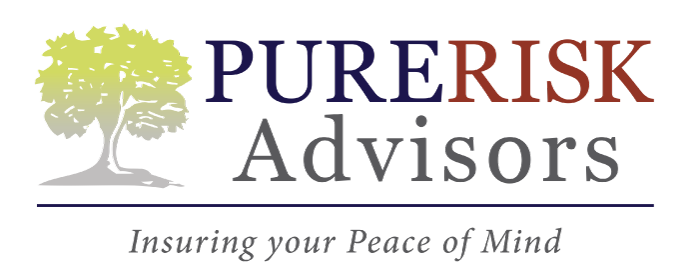Utah Condo Building Property Insurance
9:00am - 5:00pm Mon-Fri
We'll Reply in 15min*
Top 3 Recommended Policies
By: John Jacquat
Business Insurance Advisor
303-843-1001
Index
Contact Us
Phone
Location
When it comes to owning a condo in Utah, understanding the intricacies of property insurance is crucial. Condo building property insurance provides essential coverage for both the structure and the common areas of a condominium complex. This comprehensive guide will delve into the key aspects of condo building property insurance in Utah, ensuring that condo owners and potential buyers are well-informed.
What is Condo Building Property Insurance?
Condo building property insurance is a specialized type of insurance designed to protect condominium associations and their members. Unlike traditional homeowners insurance, which covers individual units, condo building insurance focuses on the shared elements of the property. This includes the building structure, common areas, and amenities. By ensuring that these communal aspects are adequately covered, condo building property insurance plays a crucial role in maintaining the overall integrity and value of the condominium complex.
Furthermore, condo building property insurance can also extend to cover various additional features that enhance the living experience for residents. For instance, many policies include coverage for recreational facilities such as swimming pools, fitness centers, and clubhouses, which are often integral components of condo living. This comprehensive coverage not only protects the physical assets but also supports the lifestyle that residents expect when they choose to live in a condominium community.
Key Components of Condo Building Property Insurance
Understanding the key components of condo building property insurance is essential for both condo owners and associations. The coverage typically includes:
- Property Damage: This covers damage to the building structure and common areas due to events like fire, vandalism, or natural disasters.
- Liability Coverage: This protects the condo association against legal claims resulting from injuries or damages occurring in common areas.
- Loss of Income: If the building becomes uninhabitable due to a covered loss, this coverage helps the association recover lost rental income.
These components work together to provide a safety net for condo associations, ensuring that they can manage risks effectively. Understanding these elements can help owners make informed decisions about their insurance needs. Additionally, having a clear grasp of the insurance policy details can empower condo associations to negotiate better terms and coverage limits, ultimately leading to more favorable outcomes for all members involved.
Importance of Condo Building Property Insurance
Condo building property insurance is not just a legal requirement; it is a vital aspect of financial security for condo owners. Here are a few reasons why this insurance is important:
- Protection Against Financial Loss: In the event of a disaster, having adequate insurance can prevent significant financial burdens on the condo association and its members.
- Peace of Mind: Knowing that the property is insured provides peace of mind to owners, allowing them to enjoy their homes without constant worry about potential risks.
- Compliance with Lender Requirements: Many mortgage lenders require condo associations to carry insurance, making it a necessity for financing.
Moreover, the importance of condo building property insurance extends beyond just financial implications; it also fosters a sense of community and shared responsibility among residents. When everyone understands the value of having comprehensive coverage, it encourages proactive measures to maintain the property and mitigate risks. This collective awareness can lead to better maintenance practices, more engaged residents, and ultimately, a more harmonious living environment.

Types of Coverage Available
Condo building property insurance can vary widely in terms of coverage options. It’s essential for condo associations to understand the different types of coverage available to ensure they choose the right policy for their needs.
Master Policy vs. Individual Unit Insurance
One of the primary distinctions in condo insurance is between the master policy and individual unit insurance. The master policy is held by the condo association and covers the building and common areas. In contrast, individual unit insurance, often referred to as HO-6 insurance, is purchased by unit owners to cover their personal property and liability within their units.
Unit owners should carefully review the master policy to understand what is covered and what is not. For example, the master policy may cover the structure of the building but not the personal belongings of individual owners. Therefore, having individual unit insurance is crucial for complete protection. Additionally, unit owners should be aware of the liability coverage included in their individual policies, as this can protect them from legal claims arising from accidents that occur within their units.
Common Coverage Options
When selecting a master policy, condo associations can choose from various coverage options, including:
- All-Inclusive Coverage: This type of policy covers the building structure, common areas, and often includes coverage for personal property within individual units.
- Bare Walls Coverage: This policy covers only the structure and common areas, leaving unit owners responsible for insuring everything within their units.
- Special Form Coverage: This coverage protects against all perils except those specifically excluded in the policy.
Each option has its pros and cons, and associations should consider their unique needs when selecting a policy. For instance, while all-inclusive coverage may seem like a comprehensive choice, it can also come with higher premiums. Conversely, bare walls coverage might save money upfront but could leave unit owners vulnerable to significant out-of-pocket expenses in the event of a loss. Moreover, associations should also consider factors such as the age of the building, the location, and the specific risks associated with their area, such as flood or earthquake risks, when making their decision.
Furthermore, it is advisable for condo associations to regularly review their insurance policies and update them as necessary, especially after significant renovations or changes in ownership. Engaging with an insurance broker who specializes in condo insurance can provide valuable insights and help associations navigate the complexities of coverage options, ensuring they are adequately protected against potential risks while remaining compliant with local regulations.
Factors Affecting Condo Insurance Premiums
Understanding the factors that influence condo insurance premiums is essential for condo associations. Several elements can affect the cost of insurance, including:
Location and Risk Factors
The location of the condo building plays a significant role in determining insurance premiums. Areas prone to natural disasters, such as floods or earthquakes, may face higher insurance costs. Additionally, crime rates in the vicinity can also impact premiums, as higher crime rates often lead to increased risk for insurers. For instance, condos located in coastal areas may need to secure additional coverage for hurricane damage, while those in urban settings might require extra protection against vandalism and theft. Furthermore, proximity to emergency services, such as fire stations and hospitals, can also influence rates; buildings closer to these services may benefit from lower premiums due to quicker response times in emergencies.
Building Age and Construction Type
The age and construction materials of the building are also critical factors. Older buildings may require more maintenance and repairs, leading to higher insurance costs. Additionally, buildings constructed with fire-resistant materials may qualify for lower premiums due to reduced risk. For example, a condo built with brick or concrete may be less susceptible to fire damage compared to one made of wood. Moreover, the presence of modern safety features, such as sprinkler systems, security alarms, and reinforced windows, can further lower premiums by minimizing potential risks. Insurers often evaluate these aspects during the underwriting process, making it vital for condo associations to keep their properties updated and well-maintained.
Claims History
The claims history of the condo association can significantly influence insurance premiums. Associations with a history of frequent claims may see higher rates, while those with a clean record may benefit from lower premiums. Maintaining the property and addressing issues promptly can help keep insurance costs manageable. Additionally, implementing risk management strategies, such as regular inspections and maintenance schedules, can demonstrate to insurers that the association is proactive in reducing risks. This not only helps in keeping premiums lower but also fosters a safer living environment for residents. Furthermore, associations may consider offering educational resources to residents about minimizing risks, such as fire safety tips and guidelines for preventing water damage, which can further enhance the overall safety and security of the property.

How to Choose the Right Condo Insurance Policy
Selecting the right condo building property insurance policy requires careful consideration and research. Here are some steps to guide condo associations in making informed decisions:
Assessing Coverage Needs
Before choosing a policy, it’s essential to assess the specific coverage needs of the condo association. This includes evaluating the value of the building, common areas, and amenities. Understanding the unique risks associated with the property can help determine the necessary coverage limits. For instance, if the condo is located in an area prone to natural disasters such as floods or earthquakes, additional coverage may be necessary to protect against these specific threats. Additionally, consider the types of amenities offered, such as swimming pools or fitness centers, which may require specialized coverage to safeguard against liability claims.
Comparing Insurance Providers
Not all insurance providers offer the same coverage options or pricing. It’s advisable to obtain quotes from multiple insurers and compare their offerings. Look for providers with a strong reputation for customer service and claims handling, as these factors can significantly impact the overall experience. Furthermore, pay attention to the policy details, including deductibles, exclusions, and any endorsements that may enhance coverage. Some providers may offer discounts for bundling policies or for having security features in place, which can lead to significant savings for the condo association.
Consulting with an Insurance Agent
Working with an experienced insurance agent can provide valuable insights into the best coverage options for a condo association. An agent can help navigate the complexities of insurance policies and ensure that the association is adequately protected against potential risks. They can also assist in understanding the nuances of state regulations and local laws that may affect insurance requirements. Moreover, a knowledgeable agent can offer advice on risk management strategies that could lower premiums and enhance the overall safety of the property, such as implementing regular maintenance schedules or investing in security systems.
Understanding Policy Limits and Exclusions
It's crucial for condo associations to thoroughly understand the policy limits and exclusions outlined in their insurance agreements. Each policy will have specific terms that define what is covered and what is not, which can significantly affect the financial protection of the association. For example, while general liability coverage may protect against accidents in common areas, it might not cover damages caused by negligence or intentional acts. Therefore, it’s important to discuss these details with the insurance agent to ensure that the policy aligns with the association's needs and expectations. Additionally, associations should consider the implications of underinsurance, as inadequate coverage can lead to substantial out-of-pocket expenses in the event of a claim.
Common Exclusions in Condo Building Insurance
While condo building property insurance provides essential coverage, it’s crucial to be aware of common exclusions that may apply. Understanding these exclusions can help condo owners and associations avoid unexpected gaps in coverage.
Natural Disasters
Many condo insurance policies exclude coverage for certain natural disasters, such as floods and earthquakes. In Utah, where seismic activity can occur, it may be necessary for condo associations to purchase additional coverage or separate policies to protect against these risks. Additionally, regions prone to flooding may require specific flood insurance, which is often not included in standard property insurance policies. Condo owners should also consider the potential for wildfires, especially in areas with dry climates, as these can lead to significant property damage and may necessitate further protective measures.
Negligence and Maintenance Issues
Insurance policies typically do not cover damages resulting from negligence or lack of proper maintenance. If a claim arises due to failure to address maintenance issues, the insurance provider may deny coverage. It’s essential for condo associations to stay proactive in maintaining the property to avoid such situations. Regular inspections and timely repairs can not only prevent costly damages but also demonstrate to insurers that the association is managing the property responsibly. Moreover, establishing a clear maintenance schedule and communicating it to unit owners can foster a sense of community responsibility and encourage everyone to participate in keeping the property in top condition.
Personal Property of Unit Owners
While the master policy covers common areas and the building structure, it usually does not cover the personal property of individual unit owners. Unit owners should obtain their own HO-6 insurance to protect their belongings and personal liability. This type of insurance can cover a wide range of personal items, from electronics to furniture, and even liability for accidents that occur within the unit. Furthermore, unit owners should take inventory of their possessions and keep receipts or photographs as proof of ownership, which can be invaluable in the event of a claim. By being proactive and informed about their insurance needs, condo owners can ensure they are adequately protected against unforeseen circumstances.
Filing a Claim: Step-by-Step Guide
In the unfortunate event of a loss, knowing how to file an insurance claim is crucial for condo associations. Here’s a step-by-step guide to help navigate the claims process:
Document the Damage
The first step in filing a claim is to document the damage thoroughly. Take photographs, make notes, and gather any relevant evidence that can support the claim. This documentation will be essential when communicating with the insurance provider.
Notify the Insurance Provider
Once the damage has been documented, the next step is to notify the insurance provider. Most insurance companies have specific procedures for filing claims, so it’s essential to follow their guidelines. Provide all necessary information and documentation to expedite the claims process.
Work with the Adjuster
After the claim has been filed, an insurance adjuster will typically be assigned to assess the damage. It’s important to cooperate with the adjuster and provide any additional information they may require. The adjuster will evaluate the claim and determine the coverage amount based on the policy terms.
Conclusion
Condo building property insurance is a vital aspect of owning and managing a condominium in Utah. Understanding the different types of coverage, factors affecting premiums, and the claims process can empower condo owners and associations to make informed decisions. By taking the time to assess coverage needs and work with reputable insurance providers, condo associations can ensure they are adequately protected against potential risks.
As the real estate market continues to evolve, staying informed about insurance options and requirements is essential for maintaining the value and safety of condo properties. With the right insurance coverage in place, condo owners can enjoy peace of mind and focus on what truly matters—creating a vibrant community.


